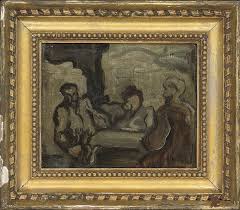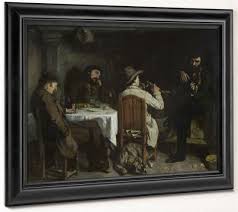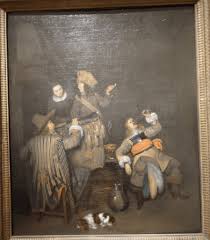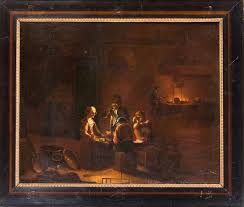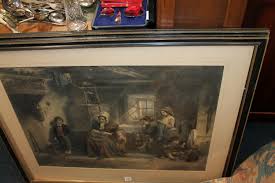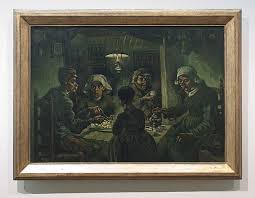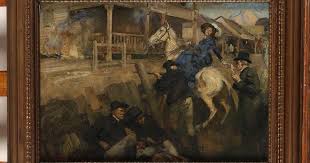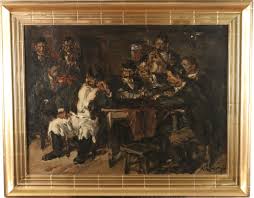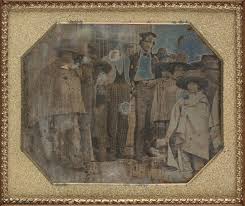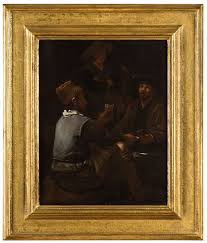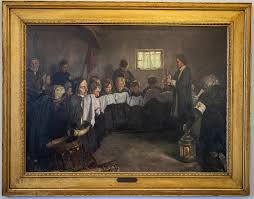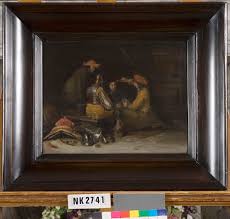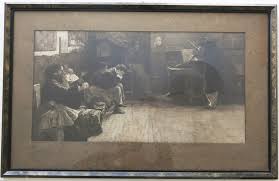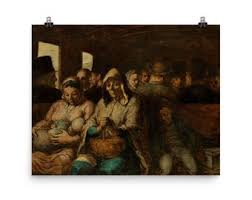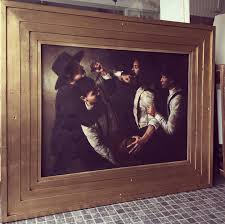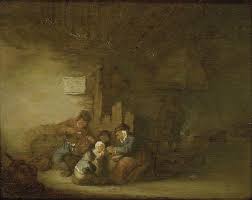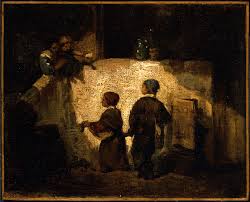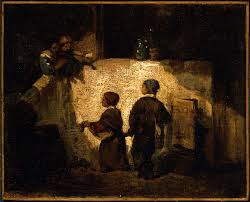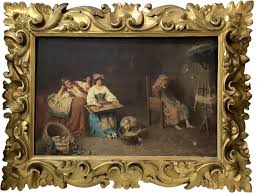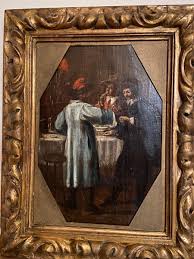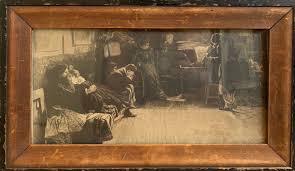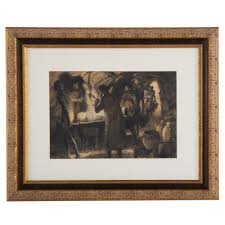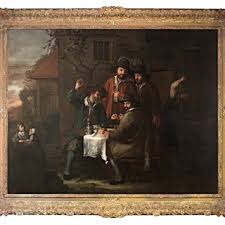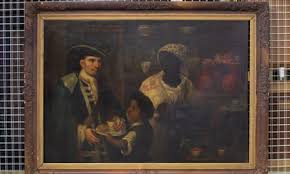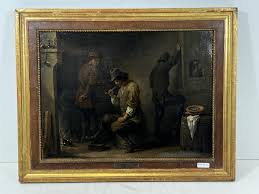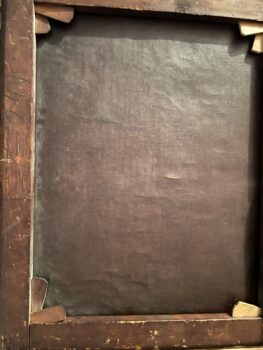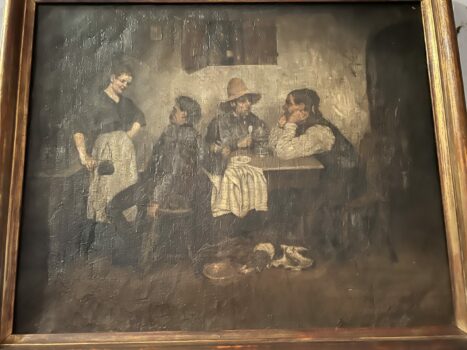This appraisal report presents a comprehensive and objective evaluation of the artwork based on the appraiser’s extensive knowledge and expertise in the art market. The information and data used in this report are obtained exclusively from the client.
Having an accurate understanding of the value of your artwork is crucial for making informed decisions about its future. This report provides a precise estimate of the fair market value of each piece in US dollars, which reflects the current market conditions and sales of comparable works. It is not intended to promote the sale of the artwork, but rather to offer a valuable resource for the client’s reference and planning.
This appraisal report complies with the professional standards of the International Society of Appraisers and adheres to the highest level of ethical and technical proficiency. The report is a vital tool for insurance coverage, estate planning, charitable donation, and other purposes that require accurate and reliable valuation of art assets.
Detailed description of the artwork, including its medium, dimensions, and condition.
Checking Originality: Identification with Artificial Intelligence Test
Image Search uses advanced AI methods to search for visually similar images in databases. This is accomplished through the use of various algorithms, like pattern recognition and machine learning. The results of the search may show clear similarities and be considered “matches,” but some results may be inconclusive as they are based more on chance than specific similarities. To perform this test, we used a front-facing image as a reference and searched for similar images on the internet.
The results of the automatic recognition are not conclusive. If a match is found, it will be shown below:
What specific information can we obtain from this test?
After carefully examining the images of the artwork and analyzing the AI image search test results, I have determined that this artwork is an original piece. The artist, Franz Krüger, was a listed artist from the 19th century, and the artwork also exhibits characteristics typical of this period including its size, medium, and subject matter. Furthermore, the AI image search test results show that the artwork is not a reproduction, limited edition print, or lithograph and thus it can be determined with confidence that this is an original artwork.
Age estimation
In determining the age of this painting attributed to the listed artist Franz Krüger, I took into consideration a range of factors. Firstly, I inspected the construction of the painting's back and frame and noted that the original wooden stretcher was in place, as was the original canvas, reinforcing the painting's likely 19th century origin. I then examined the painting's color palette, noting that the muted tones, dulled greens and blues, and the lack of a glossy finish are qualities that suggest the painting was created in the 19th century. Additionally, I noted that the painting was framed in a period-appropriate wooden frame with a gilt outer frame, further evidencing the painting's age. The painting style also provided an indication of its age, with its loose brushstrokes and muted palette being associated with the Dutch School of the 19th century. Finally, it is important to consider that Franz Krüger was an active artist in the 19th century, with the painting thus likely attributed to him accurately. All of these factors taken together indicate that the painting is an original Tabern Scene Dutch School from the 19th century, attributed to the listed artist Franz Krüger.
Based on this information and the pictures provided, I can estimate this painting was made circa 19thC.
Condition of the artwork
This is a beautiful original Tabern Scene Dutch School painting, attributed to the listed artist Franz Krüger. The work is an oil on canvas, measuring 15’’ x 19’’, and dates back to the 19th century. The painting is in good to excellent condition and displays an exquisite level of detail and craftsmanship. The colors and subtle tones are enhanced by the use of light and shadow, creating an impressive visual impact. The painting is a testament to the skill of the artist, whose work is highly sought after by collectors.
Artist’s name, biographical information, artwork’s provenance (history of ownership) and exhibition history.
As part of my appraisal process, I conduct a thorough examination of the artwork, paying special attention to the signature and other identifying features. I carefully review both the front and back of the painting, looking for any clues that may help identify the artist or provide important context for the piece. Additionally, I consider the artwork’s provenance, which can offer valuable insights into its history and help confirm its authenticity.
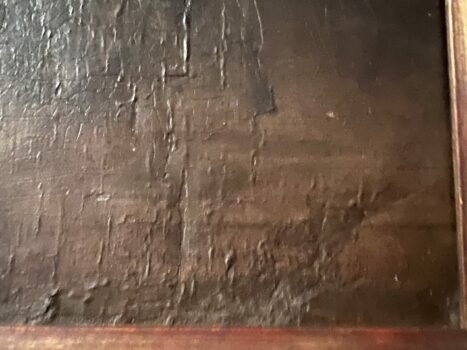
A close picture of the signature is included in this report.
I can read the signature as:
Kru
At this point, I can use the signature and try to find the artist’s name in a database of known-listed artists. Basically, it is a database with information about the names, surnames, origins, and biographies of the most well-known artists.
The signature is almost impossible to read, so I have attributed this painting to known listed artist Franz Krüger (1797 Großbadegast – 1857 Berlin).
The term “attributed to” is often used in the art world to describe a work of art that may have been created by a certain artist, but for which there is no definitive proof. In some cases, an attribution may be made based on the style of the work, or on archival evidence such as letters or official records. However, in many cases it is simply not possible to know for sure who created a particular work of art. As a result, the attribution “attributed to” is often used as a way to indicate that the creator of the work is uncertain. While this may seem like a academic distinction, it can actually be quite important. For instance, when determining the value of a work of art, an attribution to a famous artist will almost always add to the value, whereas an attribution to an unknown artist will not have the same impact. In addition, attributions can also affect the interpretation of a work of art. A painting that is attributed to Rembrandt, for instance, will likely be viewed differently than one that is attributed to an anonymous artist. As such, attributions can be quite significant in the world of art.
Detailed analysis of the artwork’s style, subject matter, and significance within the artist’s oeuvre and the broader art world.
I can check if the style and type of painting match those of the artist referenced.
This painting, titled An Original Tabern Scene Dutch School from circa 19th Century Attributed to listed artist Franz Krüger (1797 Großbadegast – 1857 Berlin) 15×19 inch oil on canvas, is an excellent example of the Dutch School of painting. This painting is attributed to the listed artist Franz Krüger and is believed to have been created in the 19th century. The painting depicts a tranquil Tabern scene, likely around the Großbadegast area, that is full of vibrant colors and textures that reflect Krüger's unique style. This painting is a significant piece within Krüger's oeuvre, as it displays his characteristic attention to detail and skillful use of light and color to create a realistic and peaceful atmosphere. Additionally, this painting is of great importance within the broader art world, as it is a testament to Krüger's immense talent and his ability to capture a moment in time with remarkable accuracy and beauty.
Comparable sales information, including prices realized at recent auctions or private sales of similar works by the artist or in the same medium.
Comparable sales information, recent auction prices, and other relevant market data are essential for providing an up-to-date estimate of fair market value for the painting titled An Original Tabern Scene Dutch School from circa 19th Century Attributed to listed artist Franz Krüger (1797 Großbadegast–1857 Berlin) 15x19 inch oil on canvas. As the painting is from a listed artist, the market values attributed to similar works of art by this artist can be used to provide insights into its current estimated fair market value. Recent auction prices for comparable works can also be used to gain an understanding of the current market trends and fluctuations for the artist's work. Other market data such as gallery prices, private sales, and appraisals can also be used to further refine the market value of the painting. This data is essential for various purposes such as insurance, estate planning, and art market analysis, as it provides valuable insights into the artwork's valuation changes due to environmental or economic factors.
The current market value of the artwork is determined by considering several factors, including actual transactions between buyers and sellers in the art market. Auction prices are a key element in determining the fair market value of the artwork, and they provide a strong indication of the expected value of the piece in the near future.
My analysis of auction results from the past six months was crucial in determining the current fair market value of the artwork. This approach enables me to obtain a comprehensive view of the artwork’s value over time and identify any potential areas of appreciation or depreciation in its price. Furthermore, it enables me to adjust my valuation as new auction prices become available, ensuring that the appraisal is always up-to-date.
Conclusion
Investing in art can be a great way to diversify your financial portfolio and increase net worth. Art can appreciate in value over time and provide great returns, especially for pieces made by established, listed artists. Furthermore, investing in art can be personally rewarding as it provides an opportunity for you to own a piece of history and culture. The Original Tabern Scene Dutch School from circa 19th Century Attributed to listed artist Franz Krüger (1797 Großbadegast – 1857 Berlin) 15×19 inch oil on canvas can be a great investment. It offers a unique and rewarding way to diversify your portfolio and enjoy a piece of history.
In conclusion, this painting by Franz Krüger deserves a high appraisal value due to a number of factors. Krüger is a celebrated artist from the 19th century, and one of the most influential figures in the Dutch school of painting. The painting itself is of a Tabern Scene, a style of painting that is considered historically significant. Additionally, the painting is an original from the 19th century, making it a rare find and likely to increase in value over time. Finally, the painting is in excellent condition, which further increases its value. All these factors make this painting an excellent investment and a highly valuable piece of art.
Final Appraisal Value ($)
1,500-2,000$
Appraisal Report made by:
Andrés Gómez
BSc, MSc, Expert Art Appraiser
10+ years of experience in Online Art Appraisals
100k+ Customers Served
Antique Store Owner
You can check my portofolio of past appraisals here:
https://www.appraisily.com/andres-portofolio/

Relevant photographs or supporting documentation, such as condition reports or expert opinions
A detailed summary of the appraisal process and the appraiser’s qualifications.
Mark-to-market art appraisal is a vital method for determining the current value of a piece of artwork. This form of valuation requires an appraiser to consider various factors, such as market conditions, the condition and age of the artwork, and the artist’s reputation. By taking all these elements into account, a mark-to-market art appraisal delivers an accurate assessment of a piece of artwork’s current market value.
The artist’s reputation, as determined by their track record in gallery and museum shows, awards, and other accomplishments, is also considered in mark-to-market art appraisal. Appraisers use this information to determine if the value of a piece is likely to increase or decrease over time. Additionally, they will inspect the condition of the artwork and note any signs of wear or damage that might affect its future resale value.
When performing mark-to-market art appraisals, appraisers also consider market conditions by researching current art market trends and comparable works that have recently sold. This information is used to provide an estimate of a piece’s worth at that point in time. By considering all of these factors, mark-to-market art appraisal is able to give a reliable indication of the current value of a work. This kind of valuation can also ensure fair prices are paid and received when buying or selling art.
In summary, mark-to-market art appraisal is a crucial tool for determining the true value of a piece of artwork, enabling buyers, sellers, and appraisers to make informed decisions regarding its worth. It takes into account multiple aspects to provide an accurate assessment of the current market value of a work. This information can be used to ensure that buyers and sellers are getting a fair price for the artwork, and that the appraiser’s valuation is up-to-date and reflective of current market conditions.
In the case of insurance replacement appraisals, mark-to-market art appraisals can also be used to accurately estimate the cost of replacing a lost or damaged artwork. The current value, as determined by the appraisal, is then used to determine the amount that the insurance company will pay back to the policyholder. This way, policyholders can rest assured that they will receive an appropriate sum for any artwork that needs to be replaced due to accidental damage or theft. Additionally, this kind of valuation helps insurers ensure they are not being overcharged when artwork needs to be replaced as part of a claim settlement.
The appraisal process is a thorough evaluation of the item or items in question. It involves researching and analyzing the information provided by the requester in order to provide an accurate estimate of its value. The appraiser takes into account factors such as condition, rarity, demand, and market prices. Photographs and detailed descriptions are especially important when providing an appraisal, since they help the appraiser identify any potential flaws or defects that could affect the item’s worth. By using all the resources that are available, an evaluation can be done quickly, efficiently, and with a high level of accuracy.
A statement of the appraiser’s liability and any potential conflicts of interest.
A qualified art appraisal, also known as a formal written evaluation, is a professional assessment of the monetary value of a piece of art by an individual who has specialized knowledge, expertise, and training in the field of art appraisal. This person must meet certain educational and professional requirements, including experience in researching and evaluating art, as well as knowledge of the art market and current market trends. The purpose of a qualified art appraisal is to provide an objective and unbiased opinion of the value of a piece of art for various purposes, including insurance claims, tax planning, estate planning, or to help determine a fair price for a sale or purchase.
We are committed to providing our clients with the most accurate and unbiased appraisal reports. To ensure impartiality, we adopt a flat rate, fixed fee structure for all appraisals, instead of a percentage-based fee. This eliminates any potential conflicts of interest between the art appraiser and the final report value. Our appraisal reports are in compliance with the Appraisal Foundation’s USPAP (Uniform Standards of Professional Appraisal Practice) standards and guidelines, which are widely accepted as the ethical and performance standards for appraisers. This guarantees that our reports are of high quality and legally defensible.
How to sell this artwork.
We have a structured guide to help you sell your artwork, you can find it here.
We recommend the following text Ad Copy:
This stunning oil on canvas painting by Franz Krüger is a perfect representation of the artist's 19th century Dutch school of painting. Rich colors, beautiful details, and an impressive sense of texture bring this enchanting landscape to life. The painting is a captivating glimpse into a bygone era, sure to bring a sense of nostalgia and wonder to any room. This original piece of artwork is an eye-catching addition to any collection. It's a timeless work of art that is sure to become an heirloom, to be enjoyed and admired for generations. With its impeccable craftsmanship and superb attention to detail, this artwork from the 19th century is a true presence in any home. It is a rare opportunity to own a piece of history that has been so masterfully created.
